I ask: “So Miriam Keegan, how did a farmer’s daughter from Laois end up at the biggest fashion showcase on the planet? And more importantly why didn’t you invite Irish Country Living to cover said event?”
She laughs, the memories of what she describes as “a crazy experience” still seeming a little surreal in her mind.
“My dad is a suckler farmer, he rears dairy calves and drystock and he’s a contractor too. I’m a primary school teacher and I just always loved fashion. It’s in my family, my grandmother and great grandmother would have been into sewing, my grandmother in particularly, she was a seamstress.”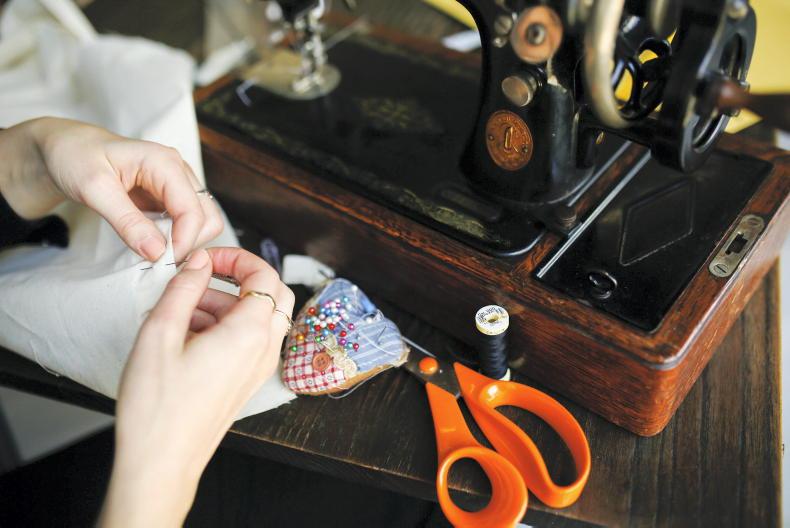
Miriam’s teaching specialism is in visual education. But it was while she was doing a fashion design course with the Fashion Design Academy of Ireland that her eyes were opened to the problems with the fast fashion industry.
To take action, she started doing workshops in sustainable fashion, teaching people how to sew which led to her creating an online summer course for her primary school colleagues, teaching them about sustainable development. This course also gives them the skills to reintroduce sewing into the classroom. Over 250 teachers have now completed her course.
Change in direction
Last April, Miriam won the Fulbright-EPA student award which has given her the opportunity to study for a master’s degree in fashion and sustainability at the University of Delaware.
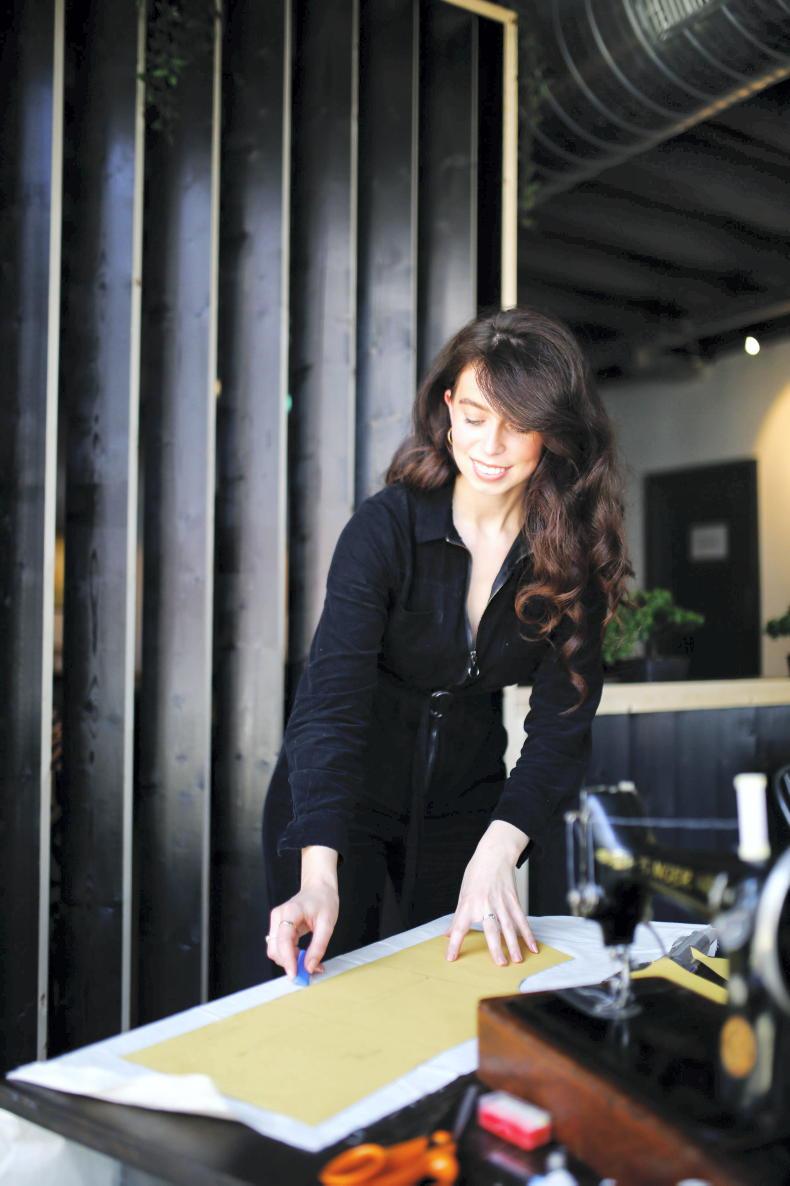
Miriam Keegan is a primary school teacher from a farm in Laois.
Her argument to get the scholarship: “We needed more research and more emphasis on sustainable fashion. The fashion industry is one of the most-damaging industries in the world. My mission is to create more awareness of this.”
First Monday in May
Miriam was only in America a few weeks when she travelled to New York city to work at Fashion Week, the Met Gala and the Video Music Awards (VMAs). And so we got back to the original question; how did that happen?
“This is just so random but my friend – Savile Row[-trained] master tailor – Rory Duffy lives in Monaghan and I was training with him last summer. An American girl called Karen Chinchilla came to train also. She is a seamstress and tailor, but she works with huge stars.”
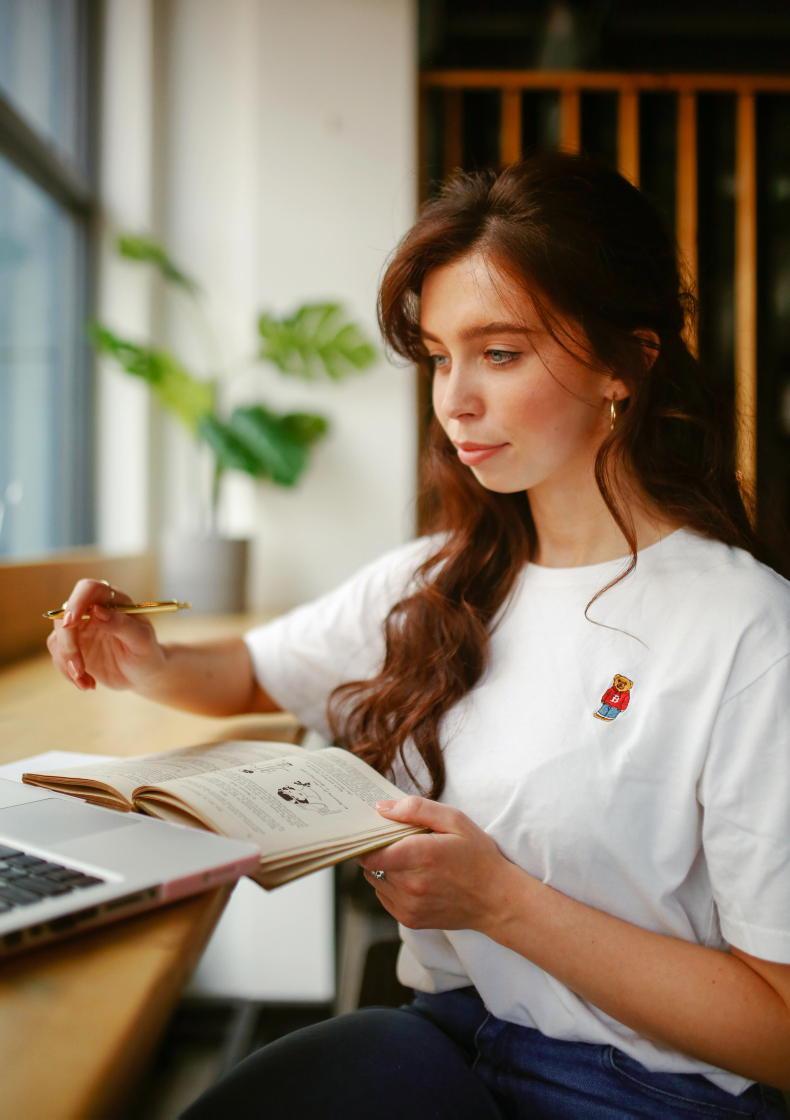
Miriam Keegan completed a design course with the Fashion Design Academy of Ireland.
Having become good friends during their time in Monaghan, Karen asked Miriam to come work for her at some events if she ever made it to America. Miriam’s response?
“Absolutely!”
With the Met Gala postponed from the usual date of the first Monday in May to September, the stars aligned for Miriam who arrived in the US in late August.
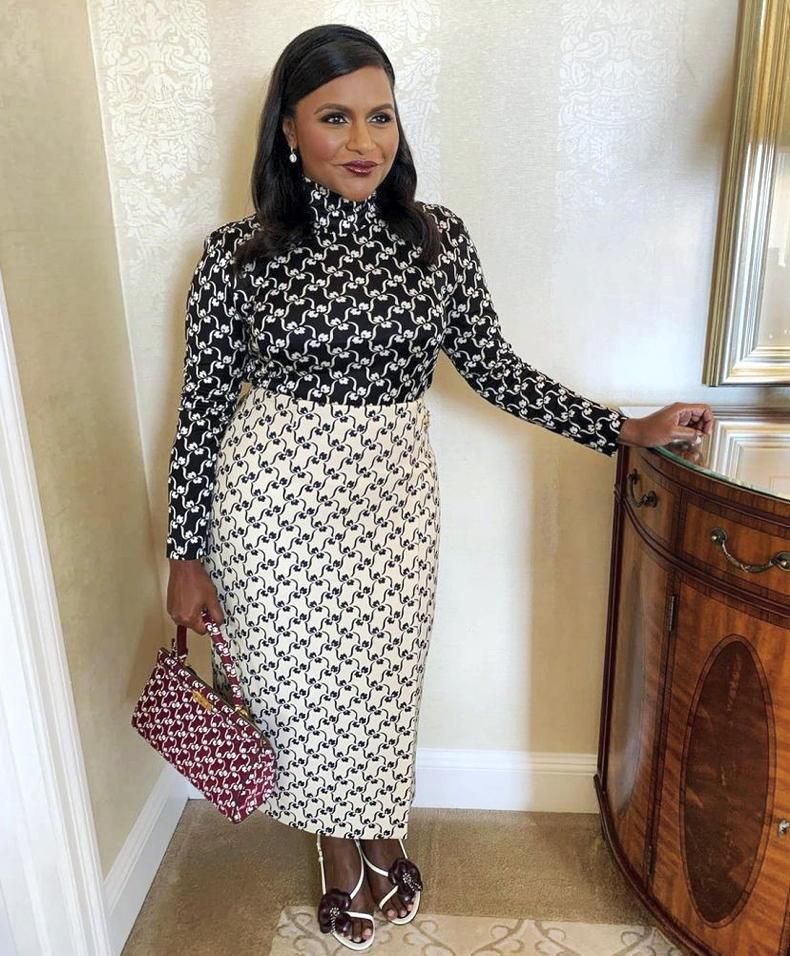
Miriam worked on Mindy Kaling’s, of the The Office, outfit for a New York Fashion Week show.
“I spent the week there (in New York), I worked on Mindy Kaling’s (The Office) outfit for the fashion show and I fitted Gemma Chan from Crazy Rich Asians. I was on set for Sophia Boutella at the VMAs and for the Met Gala, I stayed up till 6am the night before sewing the rickrack detail onto Josh O’Connor’s shirt.
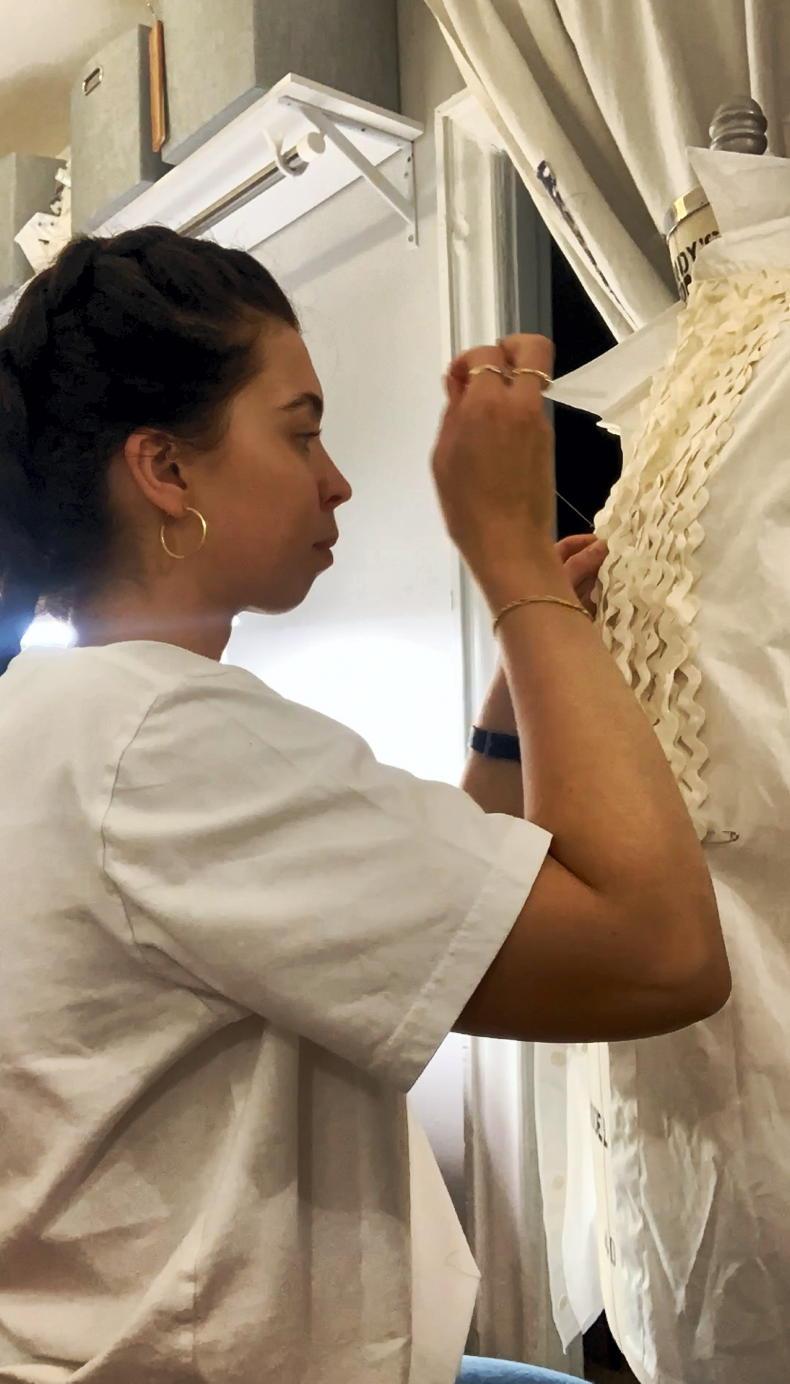
Miriam stayed up till 6am all through the night before the Met Gala sewing the rickrack detail onto Josh O’Connor’s shirt.
“It was a crazy experience, everyone on Karen’s team had a part to play and we were up till all hours and then racing through New York going from one hotel to the other, walking beside some of these celebrities and half the time, I didn’t even know who they were.”
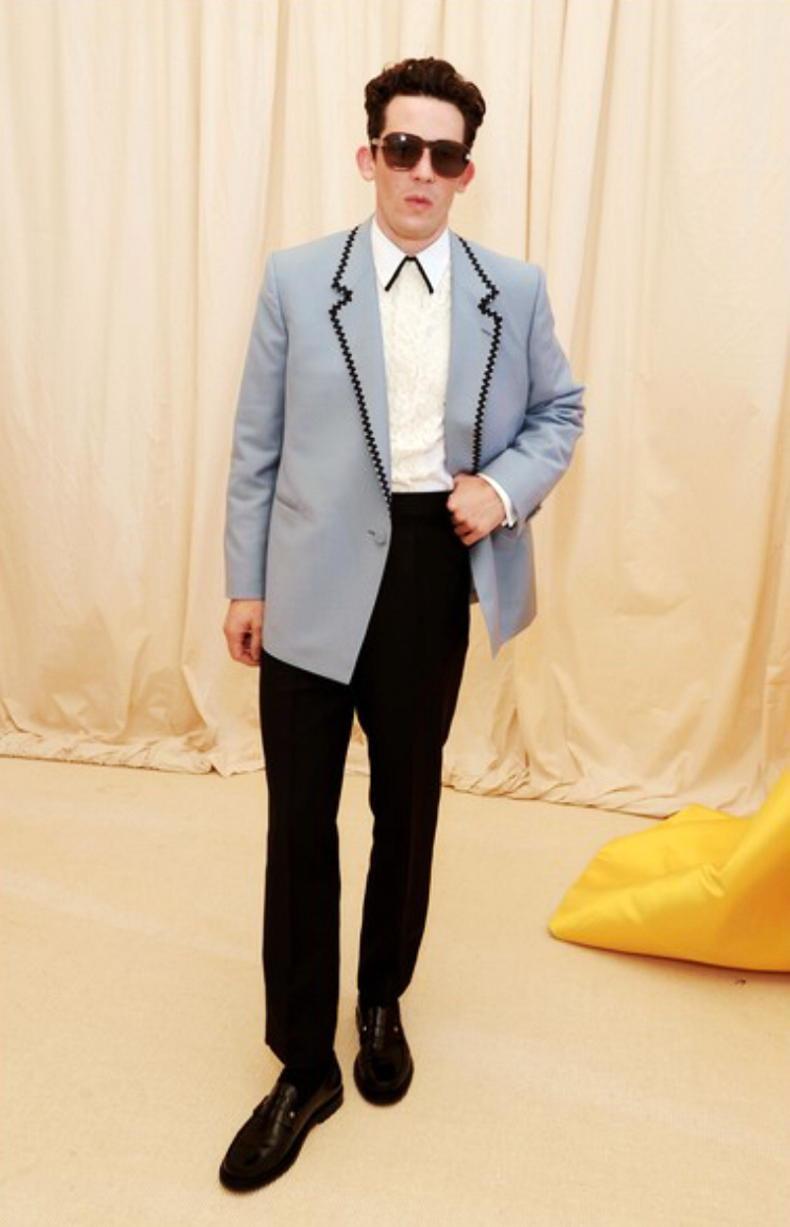
Josh O’Connor of The Crown.
Balancing high fashion
and sustainability
In 2020, Miriam actually gave up buying clothes for an entire year so is admittedly not into the glitz and glam but absolutely loves sewing.
“These luxury [fashion] events, they’re a spectacle and to a degree very wasteful. It’s nice to be able to experience that from the background, but if I was to work with a luxury brand, it would be on their sustainability team to try and help them.”
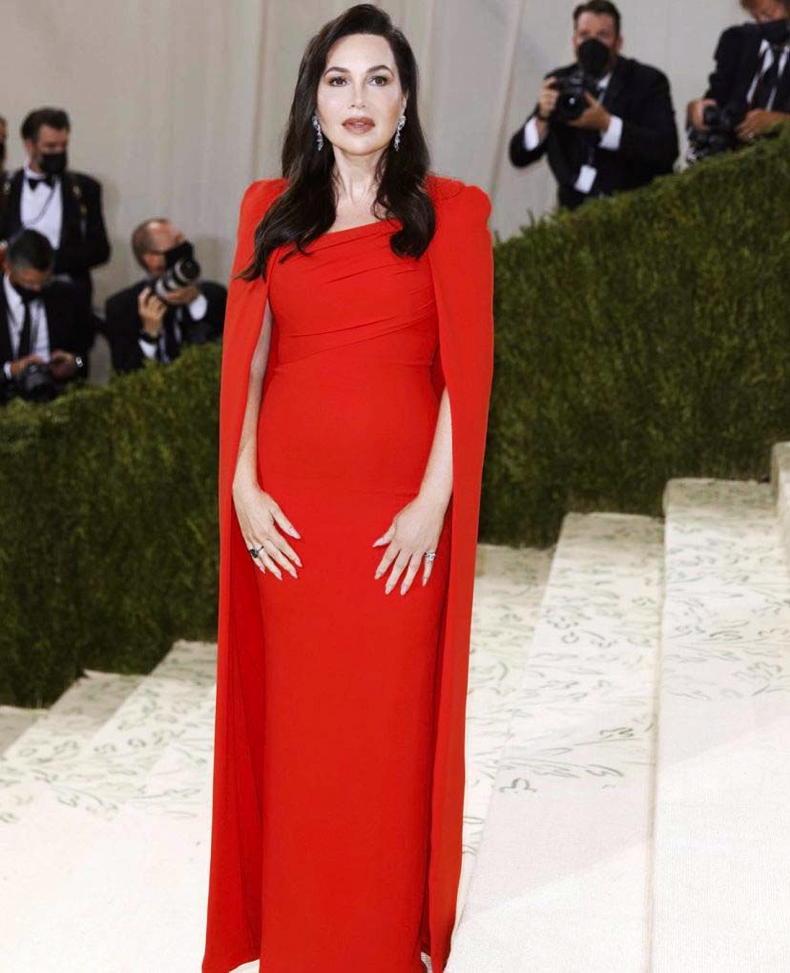
Fabiola Beracasa Beckman (film and TV producer).
This has been a pivot for Miriam, who like many “was buying, buying, buying”. It was when she learned the facts that she stopped. “We all need to change to reduce our consumption. That’s the biggest issue really, consumption.”
What is the most sustainable way to source clothes we query? Miriam says that she appreciates that sustainable brands can be expensive but that we can be more mindful and conscious.
“Use the secondhand shops, use Depop and Nuw (previously The Nu Wardrobe), the rental app. When I was growing up, we were the best in the world for hand-me-downs and nowadays, it’s just unheard of. We need to reinvigorate the swap culture in Ireland and rent clothes, especially for formal wear.”

Gemma Chan who starred in the movie Crazy Rich Asians.
There are many things to consider on the animal side of fabric production too, she notes: “We are beef farmers, we eat meat so I’m not going to be on everybody’s side, especially vegans that are completely against wool and leather. But, it’s a byproduct and it will biodegrade or compost if it’s not mixed with anything. Our meat industry is huge and I would hope that Irish designers are using Irish leather.”
A blue dress
“I have this one blue dress that I brought traveling with me all across the world, I wore it on my first day here in Delaware because it’s my mother’s. It’s 30 years old and I just love the story behind it.
“These garments are ending up somewhere and somewhere and someone somewhere is paying the cost of our cheap clothing that we thought we got a bargain for.”
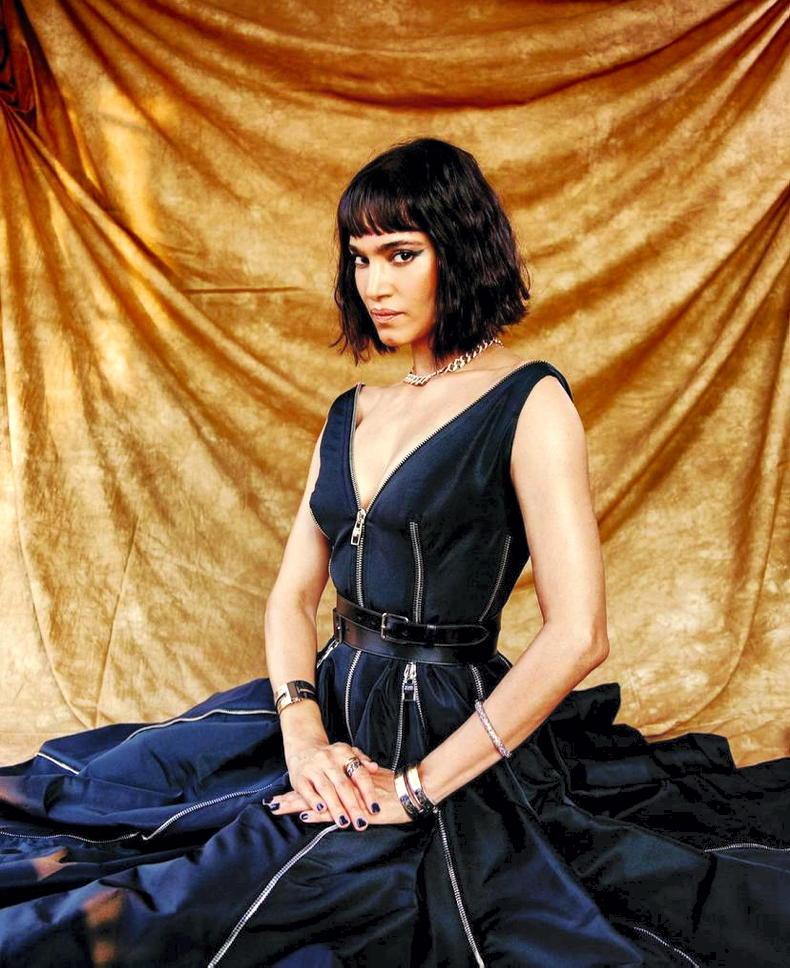
Sophia Boutella wearing Alexander McQueen at the VMAs.
Like fashion, sustainability is now trendy which means that marketers and brands see the potential to commercialise it.
Environmentalist Jay Westervelt first coined the phrase “greenwashing” in the 1980s but it is only in the last few years that it has come to the attention of the regular punter.
Greenwashing is when a company uses misleading or false claims to suggest it is doing more for the environment than it actually is.
Some of the claims or buzzwords that you may see include “eco-conscious” or “environmentally sourced”.
Although it is positive to see fashion brands moving toward more sustainability in relation to fabrics and fashion, this is a long process and cannot be achieved overnight. Therefore, like with food labelling, consumers need to be vigilant. We asked the Competition and Consumer Protection Commission (CCPC) what labelling legislation is in place on textiles and clothes to protect consumers.
The law
In respect of textile labelling, the CCPC is responsible for enforcing the EU Textile Fibre Names and Related Labelling and Marking of the Fibre Composition of Textile Products Regulations 2012. Under these regulations, all textile products must carry a label indicating the fibre content, the fibre names, descriptions and particulars on packaging, labels and markings, and in catalogues, trade and advertising literature.
The legislation makes it clear that there is an obligation for the information to be provided by the appropriate trader, when the product is placed on the market, both in store and online.
Under the Consumer Protection Act 2007, any environmental claims must be verifiable and presented in a clear, intelligible, unambiguous and timely manner to ensure that consumers are not misled.
CCPC Action
The CCPC is a member of the Consumer Protection Cooperation (CPC) Network, which facilitates and co-ordinates co-operation between competent authorities in consumer protection throughout the European Economic Area. The CCPC has a dedicated CPC unit which undertakes activities, one of which is to participate in European CPC “sweeps”. These are a set of market surveillance checks carried out by the CPC Network across Europe. These checks show whether traders are complying with their obligations under consumer protection laws. Where the checks reveal potential breaches, the CCPC uses its powers to ensure remedial action is taken.
As part of their CPC Network activity, in December 2020, the CCPC participated in a sweep to determine whether “green claims” used by traders were misleading. Following the completion of the sweep, the CCPC engaged with a number of traders regarding their green claims.
Greenwashing is not limited to the fashion industry, it is prevalent in all industries that have an impact on the planet, which is effectively all industries. We will look into this in more detail in the next Cutting through the Bull.
Contact the CCPC
If a consumer believes that they have been misled about “green claims”, consumers can call the helpline on 01-402 5555 or log on to ccpc.ie.
Globally, only 1% of our textiles are recycled. In Ireland, we currently send 63,000t of textiles to landfill every year.
Read more
A ‘fossil-free future’ means the end of polyester
Editorial: are data centres and cows Ireland’s natural advantage?
I ask: “So Miriam Keegan, how did a farmer’s daughter from Laois end up at the biggest fashion showcase on the planet? And more importantly why didn’t you invite Irish Country Living to cover said event?”
She laughs, the memories of what she describes as “a crazy experience” still seeming a little surreal in her mind.
“My dad is a suckler farmer, he rears dairy calves and drystock and he’s a contractor too. I’m a primary school teacher and I just always loved fashion. It’s in my family, my grandmother and great grandmother would have been into sewing, my grandmother in particularly, she was a seamstress.”
Miriam’s teaching specialism is in visual education. But it was while she was doing a fashion design course with the Fashion Design Academy of Ireland that her eyes were opened to the problems with the fast fashion industry.
To take action, she started doing workshops in sustainable fashion, teaching people how to sew which led to her creating an online summer course for her primary school colleagues, teaching them about sustainable development. This course also gives them the skills to reintroduce sewing into the classroom. Over 250 teachers have now completed her course.
Change in direction
Last April, Miriam won the Fulbright-EPA student award which has given her the opportunity to study for a master’s degree in fashion and sustainability at the University of Delaware.

Miriam Keegan is a primary school teacher from a farm in Laois.
Her argument to get the scholarship: “We needed more research and more emphasis on sustainable fashion. The fashion industry is one of the most-damaging industries in the world. My mission is to create more awareness of this.”
First Monday in May
Miriam was only in America a few weeks when she travelled to New York city to work at Fashion Week, the Met Gala and the Video Music Awards (VMAs). And so we got back to the original question; how did that happen?
“This is just so random but my friend – Savile Row[-trained] master tailor – Rory Duffy lives in Monaghan and I was training with him last summer. An American girl called Karen Chinchilla came to train also. She is a seamstress and tailor, but she works with huge stars.”

Miriam Keegan completed a design course with the Fashion Design Academy of Ireland.
Having become good friends during their time in Monaghan, Karen asked Miriam to come work for her at some events if she ever made it to America. Miriam’s response?
“Absolutely!”
With the Met Gala postponed from the usual date of the first Monday in May to September, the stars aligned for Miriam who arrived in the US in late August.

Miriam worked on Mindy Kaling’s, of the The Office, outfit for a New York Fashion Week show.
“I spent the week there (in New York), I worked on Mindy Kaling’s (The Office) outfit for the fashion show and I fitted Gemma Chan from Crazy Rich Asians. I was on set for Sophia Boutella at the VMAs and for the Met Gala, I stayed up till 6am the night before sewing the rickrack detail onto Josh O’Connor’s shirt.

Miriam stayed up till 6am all through the night before the Met Gala sewing the rickrack detail onto Josh O’Connor’s shirt.
“It was a crazy experience, everyone on Karen’s team had a part to play and we were up till all hours and then racing through New York going from one hotel to the other, walking beside some of these celebrities and half the time, I didn’t even know who they were.”

Josh O’Connor of The Crown.
Balancing high fashion
and sustainability
In 2020, Miriam actually gave up buying clothes for an entire year so is admittedly not into the glitz and glam but absolutely loves sewing.
“These luxury [fashion] events, they’re a spectacle and to a degree very wasteful. It’s nice to be able to experience that from the background, but if I was to work with a luxury brand, it would be on their sustainability team to try and help them.”

Fabiola Beracasa Beckman (film and TV producer).
This has been a pivot for Miriam, who like many “was buying, buying, buying”. It was when she learned the facts that she stopped. “We all need to change to reduce our consumption. That’s the biggest issue really, consumption.”
What is the most sustainable way to source clothes we query? Miriam says that she appreciates that sustainable brands can be expensive but that we can be more mindful and conscious.
“Use the secondhand shops, use Depop and Nuw (previously The Nu Wardrobe), the rental app. When I was growing up, we were the best in the world for hand-me-downs and nowadays, it’s just unheard of. We need to reinvigorate the swap culture in Ireland and rent clothes, especially for formal wear.”

Gemma Chan who starred in the movie Crazy Rich Asians.
There are many things to consider on the animal side of fabric production too, she notes: “We are beef farmers, we eat meat so I’m not going to be on everybody’s side, especially vegans that are completely against wool and leather. But, it’s a byproduct and it will biodegrade or compost if it’s not mixed with anything. Our meat industry is huge and I would hope that Irish designers are using Irish leather.”
A blue dress
“I have this one blue dress that I brought traveling with me all across the world, I wore it on my first day here in Delaware because it’s my mother’s. It’s 30 years old and I just love the story behind it.
“These garments are ending up somewhere and somewhere and someone somewhere is paying the cost of our cheap clothing that we thought we got a bargain for.”

Sophia Boutella wearing Alexander McQueen at the VMAs.
Like fashion, sustainability is now trendy which means that marketers and brands see the potential to commercialise it.
Environmentalist Jay Westervelt first coined the phrase “greenwashing” in the 1980s but it is only in the last few years that it has come to the attention of the regular punter.
Greenwashing is when a company uses misleading or false claims to suggest it is doing more for the environment than it actually is.
Some of the claims or buzzwords that you may see include “eco-conscious” or “environmentally sourced”.
Although it is positive to see fashion brands moving toward more sustainability in relation to fabrics and fashion, this is a long process and cannot be achieved overnight. Therefore, like with food labelling, consumers need to be vigilant. We asked the Competition and Consumer Protection Commission (CCPC) what labelling legislation is in place on textiles and clothes to protect consumers.
The law
In respect of textile labelling, the CCPC is responsible for enforcing the EU Textile Fibre Names and Related Labelling and Marking of the Fibre Composition of Textile Products Regulations 2012. Under these regulations, all textile products must carry a label indicating the fibre content, the fibre names, descriptions and particulars on packaging, labels and markings, and in catalogues, trade and advertising literature.
The legislation makes it clear that there is an obligation for the information to be provided by the appropriate trader, when the product is placed on the market, both in store and online.
Under the Consumer Protection Act 2007, any environmental claims must be verifiable and presented in a clear, intelligible, unambiguous and timely manner to ensure that consumers are not misled.
CCPC Action
The CCPC is a member of the Consumer Protection Cooperation (CPC) Network, which facilitates and co-ordinates co-operation between competent authorities in consumer protection throughout the European Economic Area. The CCPC has a dedicated CPC unit which undertakes activities, one of which is to participate in European CPC “sweeps”. These are a set of market surveillance checks carried out by the CPC Network across Europe. These checks show whether traders are complying with their obligations under consumer protection laws. Where the checks reveal potential breaches, the CCPC uses its powers to ensure remedial action is taken.
As part of their CPC Network activity, in December 2020, the CCPC participated in a sweep to determine whether “green claims” used by traders were misleading. Following the completion of the sweep, the CCPC engaged with a number of traders regarding their green claims.
Greenwashing is not limited to the fashion industry, it is prevalent in all industries that have an impact on the planet, which is effectively all industries. We will look into this in more detail in the next Cutting through the Bull.
Contact the CCPC
If a consumer believes that they have been misled about “green claims”, consumers can call the helpline on 01-402 5555 or log on to ccpc.ie.
Globally, only 1% of our textiles are recycled. In Ireland, we currently send 63,000t of textiles to landfill every year.
Read more
A ‘fossil-free future’ means the end of polyester
Editorial: are data centres and cows Ireland’s natural advantage?
















 This is a subscriber-only article
This is a subscriber-only article









SHARING OPTIONS: